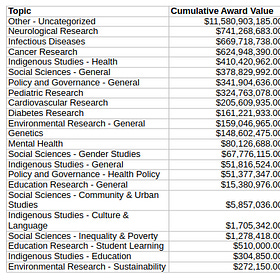Health Canada's Study on Heat-Related Deaths Is Good, but Misses the Point
Health Canada recently released a study on heat-related morbidity and mortality in Canada. The goal was to identify increasing harm and deaths caused by warmer weather events leading to heat stroke and heat exhaustion.
From what I can see, the research was well designed and, as much as possible, accounted for ambiguous cause-of-death reporting, an ageing population, and one-off anomalies. Among other things, they found that:
“Over the 42 years included in the reporting period (1981 to 2022), two-thirds of recorded heat-related deaths have occurred in the last 7 years (n=607).”
Which means that, roughly speaking, the number of heat-related deaths per year between 1981 and 2016 was 8.8, while there were around 86 deaths each year since then. That’s certainly a significant increase.
What were the researchers’ goals?
“The threat of heat-related mortality and morbidity is increasing, making a comprehensive, consistent and continually-updated national picture of heat-related deaths and illnesses a valuable tool for understanding the impacts of climate change and adaptation strategies on the health of people living in Canada.”
What kinds of “adaptation strategies” are on the table? Perhaps I’m just not thinking hard enough, but the only realistic adaptation strategy I can visualize involves providing more (and more) access to air conditioning. After all, early public warnings of coming events, neighborhood wellness checks, and building out community resources are all pretty much useless without the existence of additional cool places to shelter.
As an aside, thinking that Canadian governments are remotely capable of having a measurable positive impact on the climate is delusional. The federal government spent - or committed to spending - more than 200 billion dollars over the past 10 years in their fight against climate change. And, with all that, there’s been no clear indication that actual real-world warming has even been slowed. Does the word “Sisyphean” sound familiar?
Still, facing dozens of excess deaths a year is by no means a trivial thing. But does that automatically rank it as a high priority?
Consider this: government choices have, from a statistical perspective, probably led to thousands of excess (and preventable) deaths in Canada over the past ten years. And the government is still pushing ahead with the very policies behind the carnage.
How’s that? Well poverty is unhealthy. And government policies have consistently and demonstrably increased poverty. Let’s allow the government’s own 2025 budget document to speak for itself:
“If Canada’s productivity growth had matched the U.S. from 2017 to 2023, the median income of a family with one child would be nearly $11,000 higher.”
Ok. So why didn’t Canada’s productivity growth match that of the U.S.? Here are some key elements:
Regulatory and policy barriers
Limited competition and market protections
Chronically low business investment in capital
Rapid population growth without matching capital/labour quality improvements
What do those share in common? They’re all caused either directly or indirectly (through tax measures) by government policy choices.
How many people has that $11,000 household deficit killed? Let’s think about how poverty causes:
Higher food insecurity
Reduced ability to maintain safe housing (heat, cooling, mold, crowding)
Reduced transportation reliability (affecting access to work, pharmacies, family support networks)
Lower education and job stability for children (long-run mortality effects)
Chronic stress and “allostatic load”
Housing instability and homelessness
Risk behaviours under financial strain
Now let’s talk about the statistical relationship between poverty and mortality. it’s estimated that a 10–15 percent lower income might associate with a 3–8 percent higher age-adjusted mortality risk (interpolating from quintile studies and hazard ratios in primary care cohorts).
Given a national population of around 41 million and a crude death rate of around 8.1 per 1,000, that higher age-adjusted mortality risk could account for 3,000–10,000 additional deaths per year.
Of course those are just very rough estimates. But at the same time, there’s no doubt that poverty does kill. There’s also no doubt that government choices have contributed fairly directly to reduced productivity. And there’s also no doubt (by the government’s own admission) that reduced productivity has contributed fairly directly to increased poverty.
So shouldn’t Health Canada be spending a bit more time studying and warning about health threats that have both significant impact and measurable corrections?
You may also enjoy:
Is Canada’s $100B+ Climate Plan Based on Shaky Science?
The Climate Working Group at the U.S. Department of Energy recently published "A Critical Review of Impacts of Greenhouse Gas Emissions on the U.S. Climate". Of note, that group includes University of Guelph’s very own Professor Ross McKitrick.
Government Subsidies and the Oil and Gas Industry
Does the Canadian government subsidize companies operating in our oil and gas sector? According to research by science and technology journalist Emily Chung, between $4.5 billion and $81 billion of public funds are spent each year for assistance to the industry. But Chung notes how ambiguous definitions (what exactly
The Health Research Funding Scandal Parading in Plain View
Right off the top I should acknowledge that a lot of the research funded by the Canadian Institutes for Health Research (CIHR) is creative, rigorous, and valuable. No matter which academic category I looked at during my explorations, at least a few study titles sparked a strong “well it’s about time” reaction.





